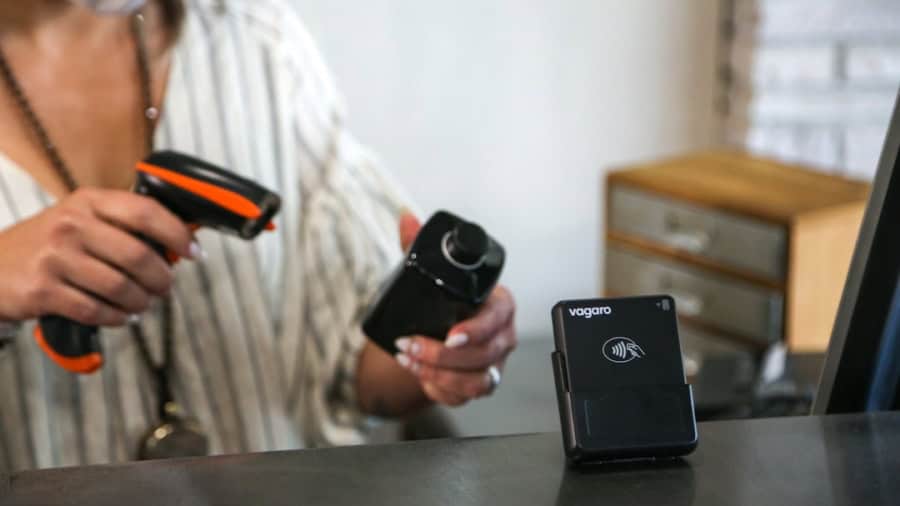In recent years, the proliferation of mobile banking has transformed the way individuals manage their finances. With the convenience of accessing banking services from anywhere at any time, mobile banking has become an integral part of daily life for millions. However, this convenience comes with significant security concerns, as the rise in cyber threats and identity theft has made it imperative for financial institutions to adopt robust security measures.
One of the most promising solutions to enhance security in mobile banking is biometric authentication. This technology leverages unique biological characteristics of individuals, such as fingerprints, facial recognition, and voice patterns, to verify identity and authorize transactions. Biometric authentication offers a more secure alternative to traditional methods like passwords and PINs, which can be easily forgotten, stolen, or compromised.
As mobile banking applications continue to evolve, integrating biometric authentication not only enhances security but also improves user experience by streamlining the login process. The increasing adoption of smartphones equipped with advanced biometric sensors has further accelerated the implementation of this technology in the financial sector. As we delve deeper into the various aspects of biometric authentication in mobile banking, it becomes evident that this technology is not just a trend but a fundamental shift in how we approach security in digital transactions.
Key Takeaways
- Biometric authentication in mobile banking provides a secure and convenient way for users to access their accounts and conduct transactions.
- Types of biometric authentication methods include fingerprint recognition, facial recognition, iris scanning, voice recognition, and behavioral biometrics.
- Advantages of biometric authentication in mobile banking include enhanced security, reduced risk of fraud, and improved user experience.
- Challenges and limitations of biometric authentication include potential privacy concerns, technical limitations, and the need for continuous innovation to stay ahead of security threats.
- Implementation of biometric authentication in mobile banking requires careful consideration of user privacy, regulatory compliance, and integration with existing banking systems.
Types of Biometric Authentication Methods
Fingerprint Recognition: The Most Widely Adopted Method
Fingerprint recognition is perhaps the most widely used biometric method in mobile devices today. Most smartphones come equipped with fingerprint sensors that allow users to unlock their devices and authorize transactions with a simple touch. This method is favored for its speed and ease of use, making it a popular choice among consumers.
Facial Recognition and Iris Scanning: Emerging Technologies
Facial recognition technology has gained traction in recent years, particularly with the advent of advanced camera systems in smartphones. This method analyzes facial features and compares them to stored data to confirm identity. While facial recognition offers a hands-free alternative to fingerprint scanning, it raises concerns about accuracy and potential biases in different lighting conditions or among diverse populations. Iris scanning is another sophisticated biometric method that captures the unique patterns in an individual’s iris. Although less common in mobile banking applications due to cost and complexity, it provides a high level of security due to the uniqueness of iris patterns.
Voice Recognition: An Emerging Technology with Potential
Voice recognition is an emerging biometric method that analyzes vocal characteristics to authenticate users.
However, it is still in the early stages of adoption and faces challenges related to background noise and variations in voice due to health or emotional states. Each of these biometric methods has its strengths and weaknesses, and financial institutions must carefully consider which technology aligns best with their security needs and user preferences.
Advantages of Biometric Authentication in Mobile Banking
The integration of biometric authentication into mobile banking offers numerous advantages that enhance both security and user experience. One of the primary benefits is the increased level of security it provides compared to traditional authentication methods. Biometric traits are inherently unique to each individual, making it exceedingly difficult for unauthorized users to gain access to sensitive financial information.
This level of security is particularly crucial in an era where cyber threats are becoming increasingly sophisticated. Another significant advantage is the convenience that biometric authentication offers. Users no longer need to remember complex passwords or PINs; instead, they can access their accounts with a simple fingerprint scan or facial recognition.
This ease of use not only improves user satisfaction but also encourages more frequent engagement with mobile banking applications. Additionally, biometric authentication can reduce the risk of account lockouts that often occur when users forget their passwords or enter incorrect information multiple times. Moreover, biometric authentication can enhance transaction speed and efficiency.
In a fast-paced world where time is of the essence, being able to authenticate transactions quickly can lead to a smoother banking experience. For instance, users can complete payments or transfers within seconds without navigating through multiple security layers. This efficiency can be particularly beneficial during peak transaction times or when users are on the go.
Challenges and Limitations of Biometric Authentication
Despite its many advantages, biometric authentication is not without its challenges and limitations. One major concern is privacy. The collection and storage of biometric data raise significant ethical questions regarding user consent and data protection.
Unlike passwords that can be changed if compromised, biometric traits are permanent and cannot be altered. If a financial institution’s database were to be breached, the consequences could be dire, as stolen biometric data could potentially be used for identity theft or fraud. Another challenge lies in the accuracy and reliability of biometric systems.
Factors such as environmental conditions, device quality, and individual differences can affect the performance of biometric authentication methods. For example, fingerprint scanners may struggle to read prints if a user’s fingers are wet or dirty, while facial recognition systems may fail in low-light conditions or if the user is wearing glasses or a mask. These limitations can lead to frustration for users who may find themselves unable to access their accounts when needed.
Additionally, there are concerns about potential biases inherent in some biometric systems. Studies have shown that certain facial recognition algorithms may have higher error rates for individuals from specific demographic groups, leading to unequal access to services. Financial institutions must be aware of these biases and work towards implementing solutions that ensure fair and equitable access for all users.
Implementation of Biometric Authentication in Mobile Banking
The successful implementation of biometric authentication in mobile banking requires careful planning and consideration by financial institutions. First and foremost, banks must invest in robust technology that can accurately capture and process biometric data while ensuring compliance with relevant regulations regarding data protection and privacy. This often involves collaborating with technology providers who specialize in biometric solutions to integrate these systems seamlessly into existing mobile banking platforms.
Training staff and educating customers about the new authentication methods is also crucial for successful implementation. Users must understand how biometric authentication works, its benefits, and any potential risks involved. Financial institutions should provide clear instructions on how to enroll their biometric data securely and what steps to take if they encounter issues accessing their accounts.
Moreover, banks need to establish comprehensive security protocols for handling biometric data. This includes encrypting stored data, implementing multi-factor authentication as an additional layer of security, and regularly auditing systems for vulnerabilities. By prioritizing security throughout the implementation process, financial institutions can build trust with their customers and encourage wider adoption of biometric authentication.
User Experience and Acceptance of Biometric Authentication
User experience plays a pivotal role in the acceptance of biometric authentication within mobile banking applications. For many users, the transition from traditional authentication methods to biometrics can be met with skepticism or hesitation due to concerns about privacy and security. Therefore, it is essential for banks to prioritize user-friendly designs that make the enrollment process straightforward and intuitive.
Providing users with clear information about how their biometric data will be used and protected can help alleviate concerns regarding privacy. Transparency is key; users should feel confident that their data will not be misused or shared without their consent. Additionally, offering options for users who may prefer traditional authentication methods alongside biometrics can cater to a broader audience and ease the transition for those who are less tech-savvy.
Feedback mechanisms are also vital for understanding user experiences with biometric authentication. Financial institutions should actively seek input from customers regarding their experiences using these systems, addressing any issues or concerns that arise promptly.
Future of Biometric Authentication in Mobile Banking
The future of biometric authentication in mobile banking appears promising as technology continues to advance at a rapid pace. Innovations such as artificial intelligence (AI) and machine learning are expected to enhance the accuracy and reliability of biometric systems significantly. For instance, AI algorithms can analyze vast amounts of data to improve facial recognition accuracy across diverse demographics, addressing some of the biases currently present in existing systems.
Moreover, as wearable technology becomes more prevalent, we may see an expansion of biometric authentication methods beyond smartphones. Devices such as smartwatches could incorporate biometric sensors that allow users to authenticate transactions seamlessly while on the go. This integration could further streamline the banking experience and make it even more convenient for users.
Additionally, regulatory frameworks surrounding biometric data are likely to evolve as governments recognize the importance of protecting consumer privacy in an increasingly digital world. Financial institutions will need to stay abreast of these changes and adapt their practices accordingly to ensure compliance while maintaining user trust.
The Role of Biometric Authentication in Securing Mobile Banking
Biometric authentication represents a significant advancement in securing mobile banking services against unauthorized access and fraud. By leveraging unique biological traits for identity verification, financial institutions can offer enhanced security while improving user experience through convenience and efficiency. However, challenges such as privacy concerns, accuracy issues, and potential biases must be addressed to ensure widespread acceptance and trust among users.
As technology continues to evolve, so too will the methods employed for biometric authentication in mobile banking. Financial institutions must remain vigilant in implementing robust security measures while fostering transparency with their customers regarding how their data is used and protected. Ultimately, the successful integration of biometric authentication will play a crucial role in shaping the future landscape of mobile banking, ensuring that it remains secure, accessible, and user-friendly for all consumers.
A related article to How Biometric Authentication Enhances Security in Mobile Banking is “What is Conversational Commerce?” This article explores the growing trend of using messaging apps and chatbots to facilitate transactions and customer interactions in the e-commerce space. To learn more about how businesses are leveraging conversational commerce to improve customer engagement and drive sales, check out this article.
FAQs
What is biometric authentication?
Biometric authentication is a security process that uses unique biological characteristics, such as fingerprints, facial recognition, or iris scans, to verify a person’s identity.
How does biometric authentication enhance security in mobile banking?
Biometric authentication enhances security in mobile banking by providing a more secure and convenient way for users to access their accounts. It reduces the risk of unauthorized access and fraud, as biometric data is unique to each individual and cannot be easily replicated.
What are the benefits of using biometric authentication in mobile banking?
Some benefits of using biometric authentication in mobile banking include increased security, reduced risk of identity theft, improved user experience, and the ability to streamline the authentication process.
What are the common types of biometric authentication used in mobile banking?
Common types of biometric authentication used in mobile banking include fingerprint recognition, facial recognition, iris scanning, and voice recognition.
Is biometric authentication in mobile banking safe?
Biometric authentication in mobile banking is generally considered safe, as biometric data is unique to each individual and difficult to replicate. However, it is important for banks and financial institutions to implement strong security measures to protect biometric data from unauthorized access.



